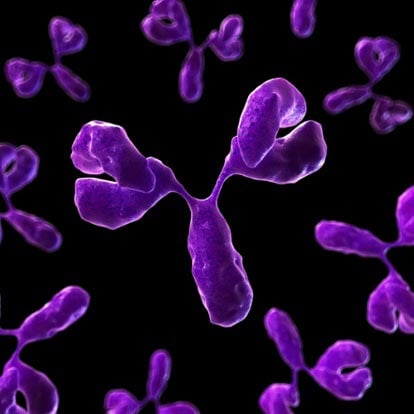By Isabel Patocchi
In the US and EU, there are over 200 approved biotherapeutic drugs already on the market. The rush to evaluate the hundreds of candidates in the pipeline has created a demand for increasingly efficient high throughput technologies in process development. You may be in the middle of this, working in method development and under pressure to quickly develop the best chromatographic conditions to purify your drug candidates. Miniaturizing chromatography could very well be the way for you to handle the pressure in many applications, including media and condition screening, process analytics, and sample prep for downstream analysis. Why? Because miniaturized purification methods can be tested in parallel and the results are scalable for production.

The pain of separation
Let’s face it, finding optimal purification conditions by running columns sequentially by conventional liquid chromatography (LC) has a lot of downsides. It is difficult, low throughput, time-consuming, labor-intensive, and consumes a lot of sample and materials. All this makes conventional LC a real bottleneck in the search for optimal conditions, resins and processes for your protein purification. Miniaturization can ease the pain by helping you to do far more testing with far less, of both resources and time. The savings in time and materials, plus being able to quickly home in on optimal conditions should make it well worth the investment. Here are just a few examples of how this is possible.
Method optimization feels more like space exploration
Well, it actually is. And often in more than four dimensions. The most effective way of exploring this space is by rational experimental design using, for example, Design Of Experiment (DOE) approaches, but this calls for more condition variables than conventional LC would allow you to explore at the same time. Let’s say that you want to test a range of anion exchange media, and then optimize the lead candidate for protein loading by varying protein concentration, pH, post load wash buffer etc. Miniaturization makes DOE with so many parameters feasible and the costs per experiment can be significantly reduced thanks to savings in process times, active pharmaceutical ingredients (APIs), resin, process-relevant products and reagents. Miniaturization combined with parallelization and DOE will also help you to learn much more about your process before scaling up, which will ultimately enhance the process performance and reduce your production costs.
Is your process under control?
You may need a quicker and more accurate way to monitor your bioreactor process using process analytics. This could involve in-process monitoring to find an optimum harvest point for a monoclonal antibody in a fermentation broth. Miniaturization of the chromatographic step would enable you to quickly analyze samples by binding the monoclonal antibody in filtered supernatants to the same protein A resin you are using in main production. The purified monoclonal antibodies can then be analyzed by, for example, CIE-HPLC, to give you the data you need to support your decision.
Easing the chore of mass-spec sample prep
LC-mass spectrometry is a high tech analytical approach, but the crucial sample prep is often very much lower tech and very time-consuming. This means you need to find a more reliable and efficient method to prep samples. The analysis of a monoclonal antibody, for example, can involve checking the heavy chains, light chains, and glycosylation level. This is done by mass spectrometry directly from the filtrated culture supernatant after desalting. The desalting step is the rate-limiting step that can be shortened ten-fold by switching to miniaturized chromatography.
Size matters, and smaller can be better
These are just a few examples of how prepacked miniaturized chromatography columns can bring more speed and efficiency to drug development. We will look more deeply into how this is possible in the next article.
For research use only. Not for use in clinical diagnostics
About the author

Dr Isabel Patocchi
Dr Isabel Patocchi is an application specialist at Tecan Switzerland. She studied biology at the ETH Zurich and focused on phytopathology during her PhD. She joined Tecan in 1999 and focuses on the development and support of applications on Tecan’s liquid handling platforms in the Cells and Proteins area.











